Creating a Voice Deployment
In this tutorial, you’ll learn how to create and run a Voice deployment.
To create a voice deployment, there are some prerequisites that need to be completed. If your username is assigned with an admin role, then you can complete all the steps to create a deployment. If your username is assigned to a role that has limited permissions, then you can create a deployment and send it for approval. Upon approval, the deployment can be activated.
Prerequisites for a Voice deployment:
- Access to Campaign management section
- A Campaign
- A Target Data for Voice channel
- A Test Contact with MSISDN as a header
- A Voice Flow created using Webex Connect
- Integrating a Voice Flow to be used in Webex Campaign
- A Caller ID
- A Router
- A Purpose
- A P&L
Step 1: Create a Deployment
A deployment is a set of instructions to process a campaign under the parent campaign.
To create a deployment.
- Navigate to Campaign management > Campaign list screen and click on the campaign in which you want to create a deployment.
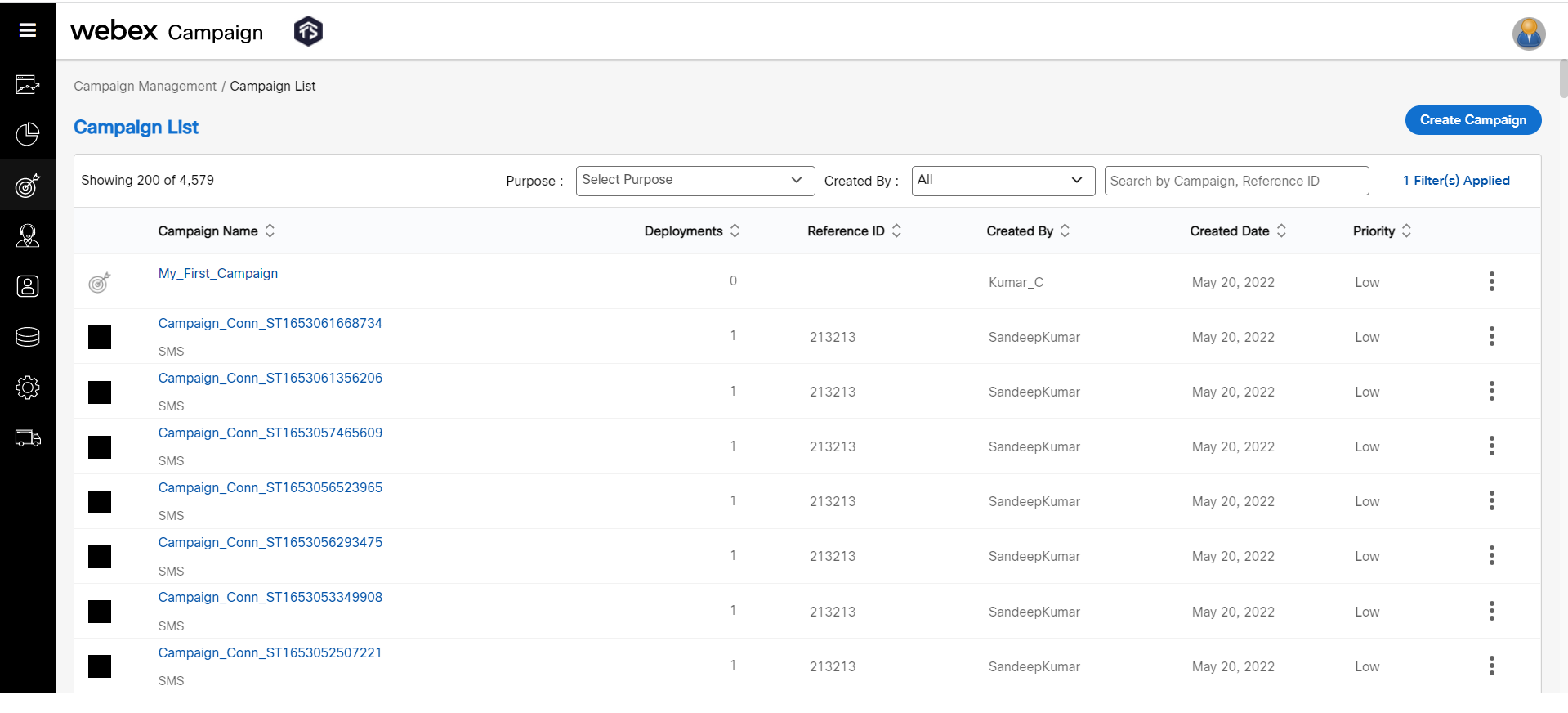
- Click Create deployment on the campaign summary screen that appears. The campaign summary screen will display the status of all the deployments of the campaign. For more information on creating a deployment, go to Creating a Deployment section.
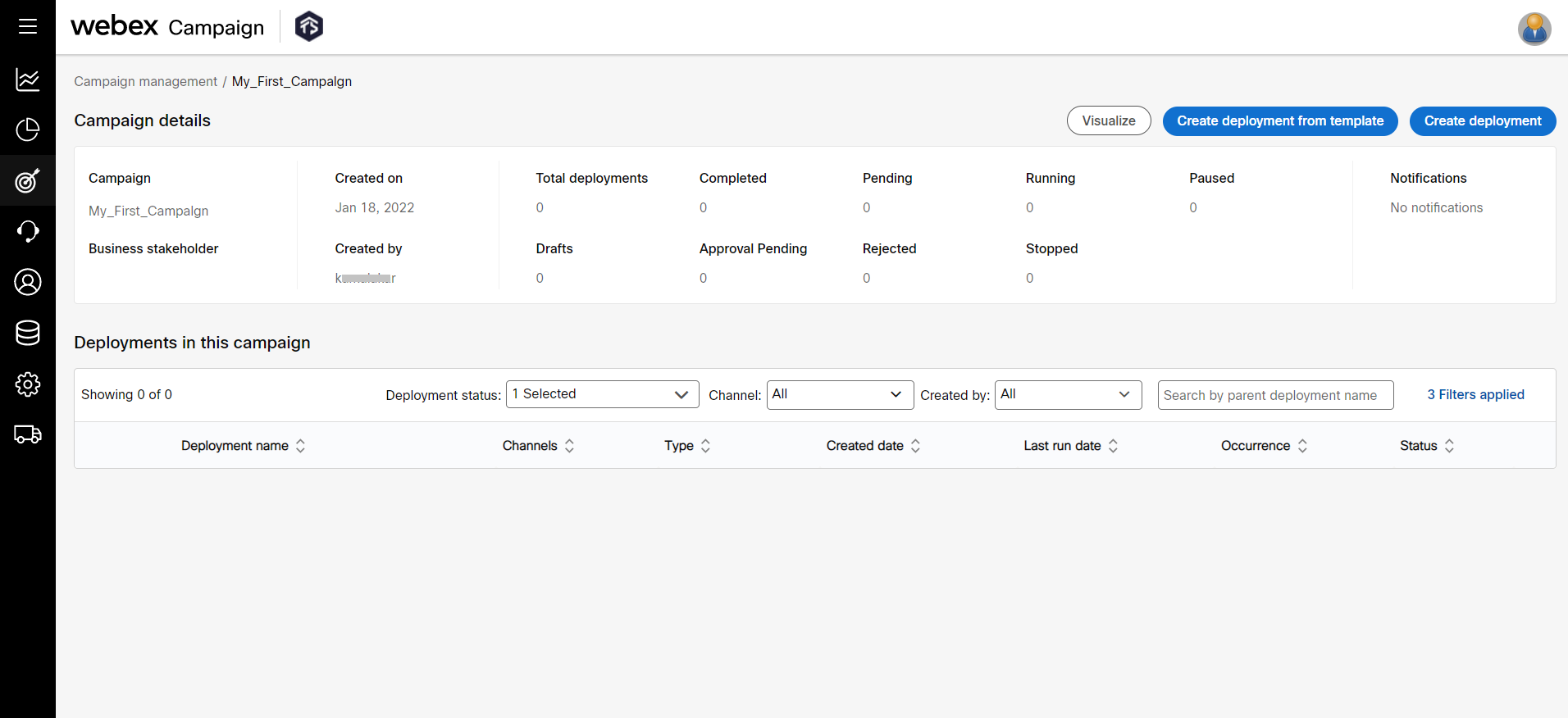
- Select the deployment type as Promotion.
- Select the type of promotion as Simple promotion, mode of deployment as One time , and content type as Message.
- Select the channel as Voice and click Create.
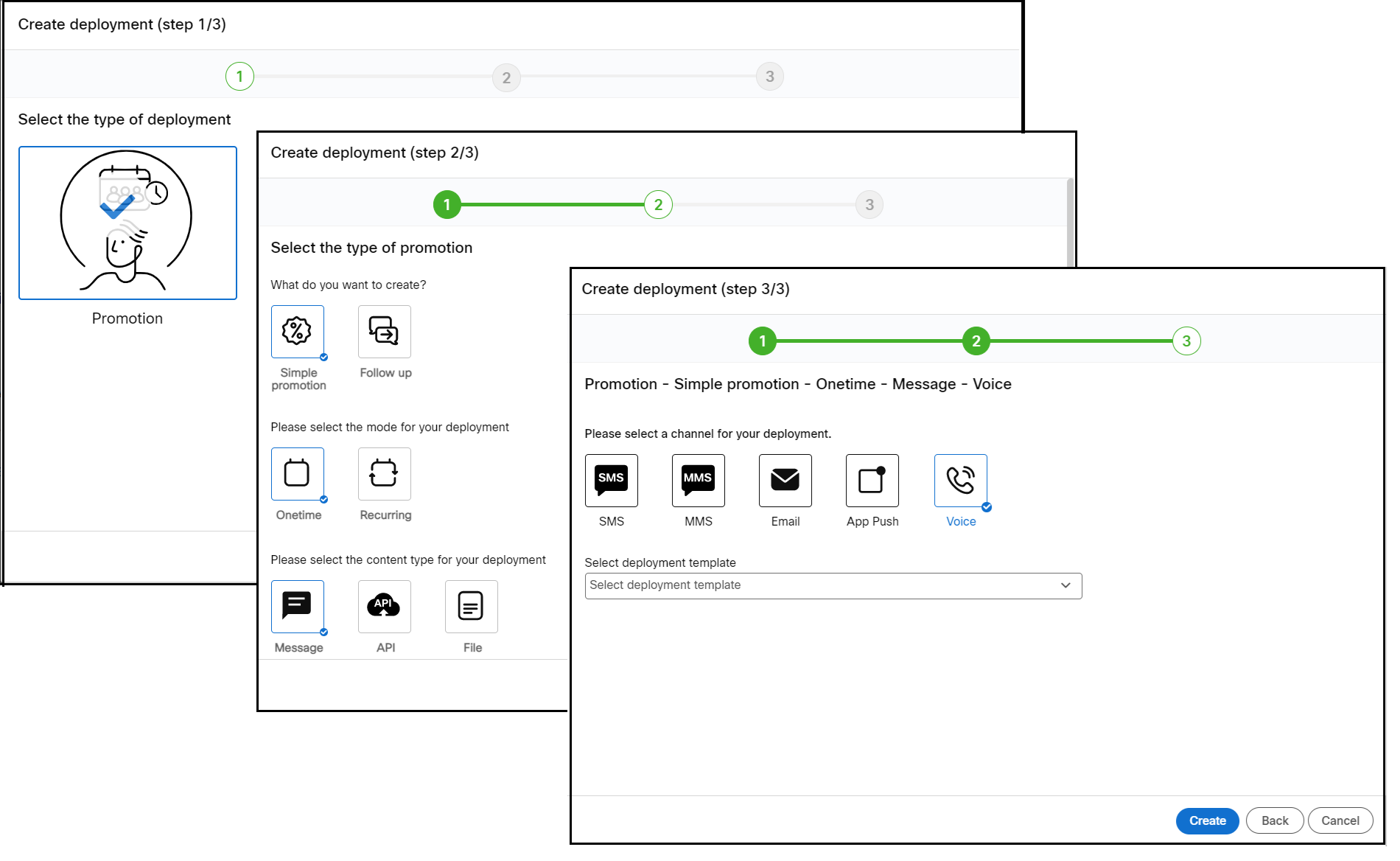
- The Deployment creation screen appears.
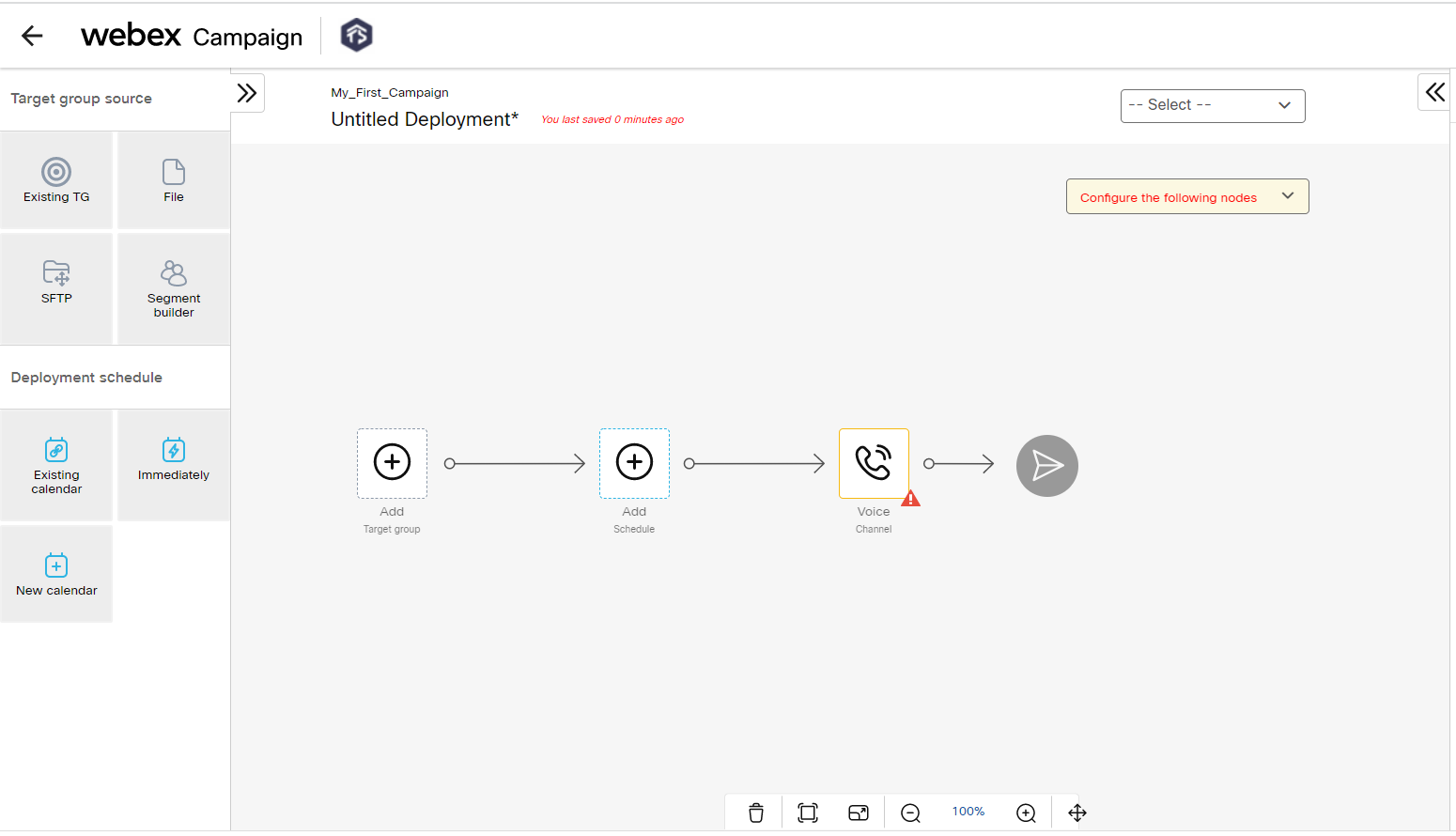
You have to configure each node in the deployment creation screen. The left panel will display different nodes that can be used to configure a node, The nodes are grouped based on their usage. On selecting a node the right panel will display the configuration options.
Step 2: Choose Your Recipients
In this step, the recipients of the campaign are selected. As mentioned in the prerequisites, a target group should already be uploaded to the Webex Campaign.
To select the recipients of the campaign:
- From the Target group source , drag-and-drop the Existing TG node onto the Target Group placeholder. We have chosen the Existing TG node because the target group is already uploaded as a prerequisite. For more information on adding a target group from different nodes, go to Target Group Source Nodes section.
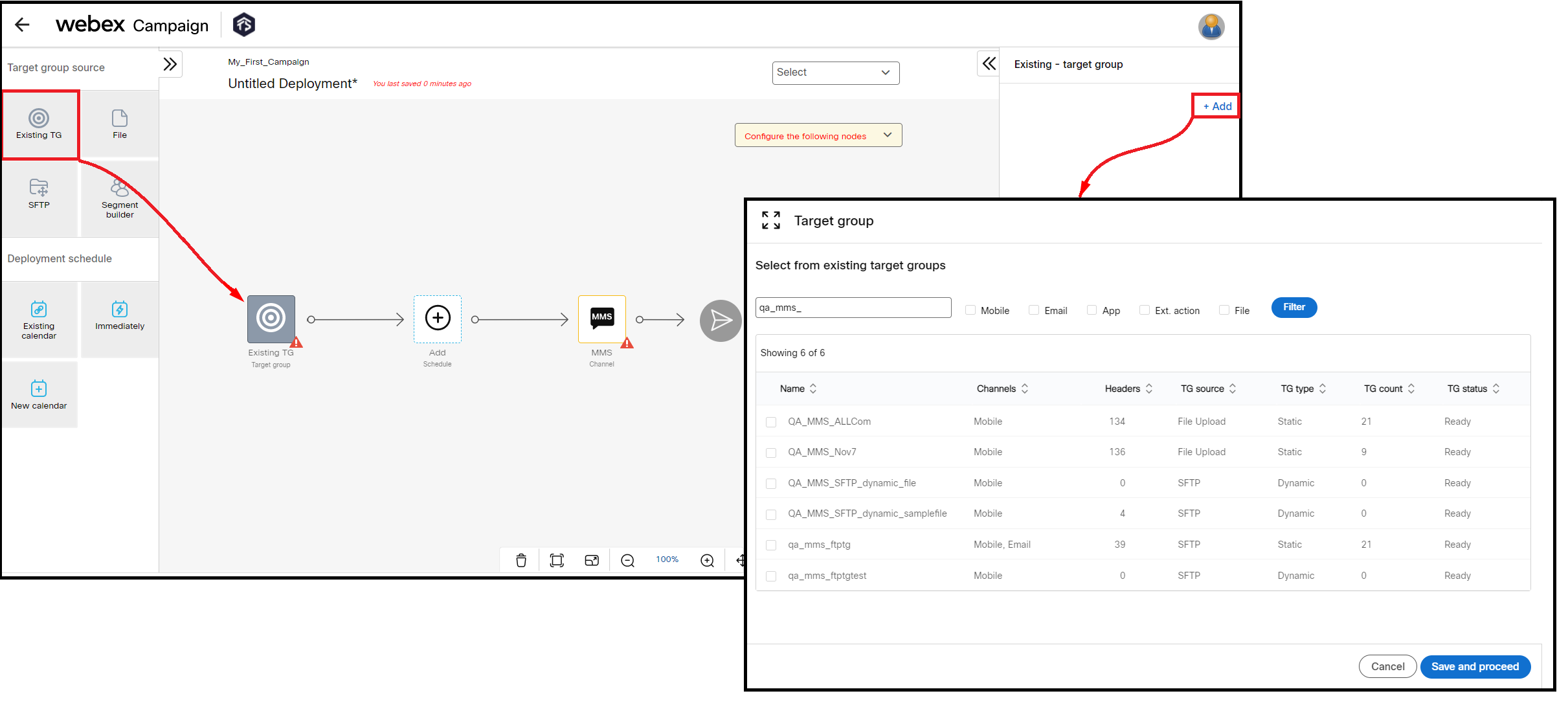
- Select the Existing TG node and click + Add from the right panel.
- Select the target group that was uploaded. In our case, it is My_First_Target_Group.
- Click Save & proceed to close the target group screen.
- Click Save changes.
Now the recipients are successfully configured for the deployment.
Step 3: Create a Schedule
In this step, select a schedule to send your campaign immediately, or create a schedule (a date and a time) to run the deployment in the future. For this tutorial, we will run the deployment Immediately as soon as the deployment is activated.
To configure the schedule:
- Drag-and-drop the Immediately node onto the Schedule node.
- Select the Schedule node. On the right panel, enter details for the following fields:
- Router: Select the router from the drop-down. This is predefined when the tenant is created.
- Retry needed: The maximum number of re-tries the system should attempt to connect the target contact if their device is temporarily unavailable. For example, out of network connectivity or device switched off.

- Click Save changes.
Step 4: Configure Exclusion Day/Times
During the exclusion day or times, the deployment is paused temporarily and resumes once the exclusion day or time has lapsed. The exclusion day or time is set by the administrator and is applicable to all campaigns across the tenant. To add a custom exclusion day or time, configure this node.
For more information on exclusion days or times, go to the Exclusion days / Times section.
For our tutorial, we will proceed with the default exclusion day or times. Select the Exclusion days/ times node and click Save changes.
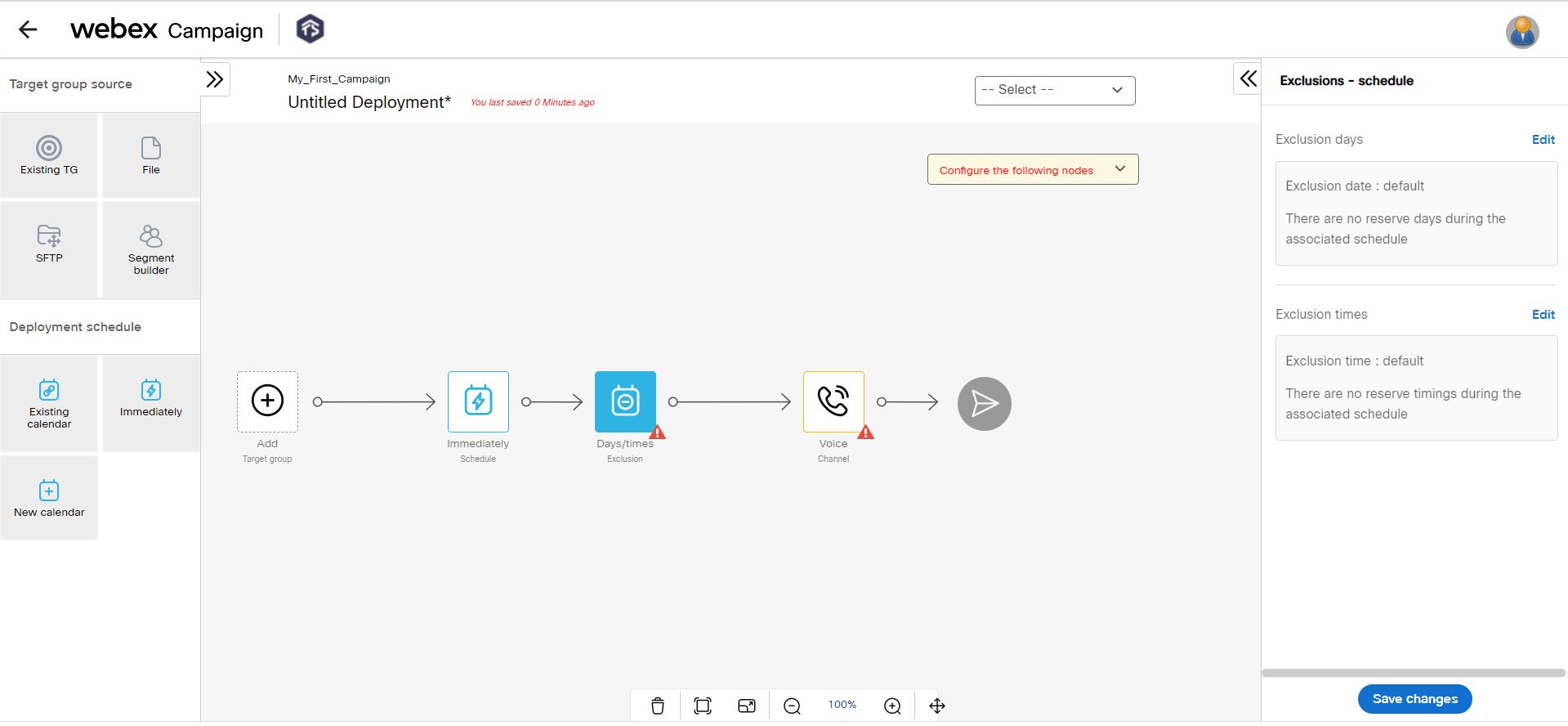
Now the schedule is successfully configured for the deployment.
Step 5: Add Your Message
In this step, the Voice content is configured.
To configure the simple Voice message:
- Select the Voice node. From the right panel, click + Add . The Voice Content configuration screen appears.
- Select the Voice menu and click Confirm.
The voice menus displayed on this screen are imported beforehand from Webex Connect. For information on importing a voice menu, refer to Importing a voice menu.
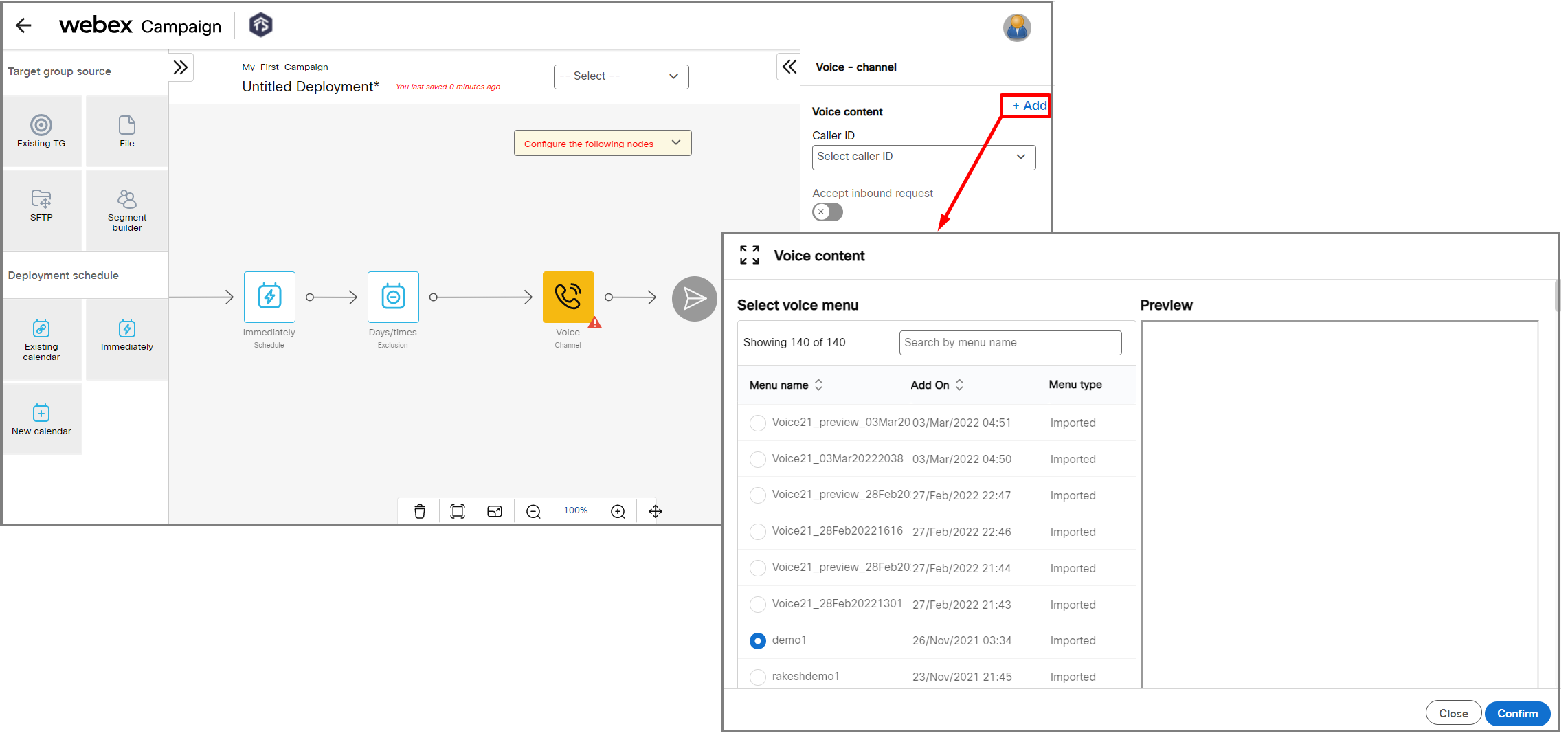
- Configure the following options:
- Caller ID: Select a Caller ID from the drop-down.
- Accept inbound request: Select Yes, to receive incoming calls to the selected Caller ID.
-
(Optional) Click on the Preview and test to preview the deployment.
-
Click Save changes.
Now all the nodes are configured.
Step 6: Save the Deployment
In this step, the deployment can be saved as a Draft or ready for Activation. The Deployment meta tags are mandatory to activate a deployment. If you are not sure of the Deployment meta tags that should be used, you can save the deployment and come back later to select the Deployment meta tags.
To save the deployment as ready for activation:
- Select Save & exit. The Save deployment screen appears.

- Enter a name for the Deployment such as My_First_Deployment.
- Select a P&L to which you want to associate this deployment.
- Select one or more purposes from the Purpose drop-down.
- Enter a Deployment code and select Opt-out category.
- Click Save.
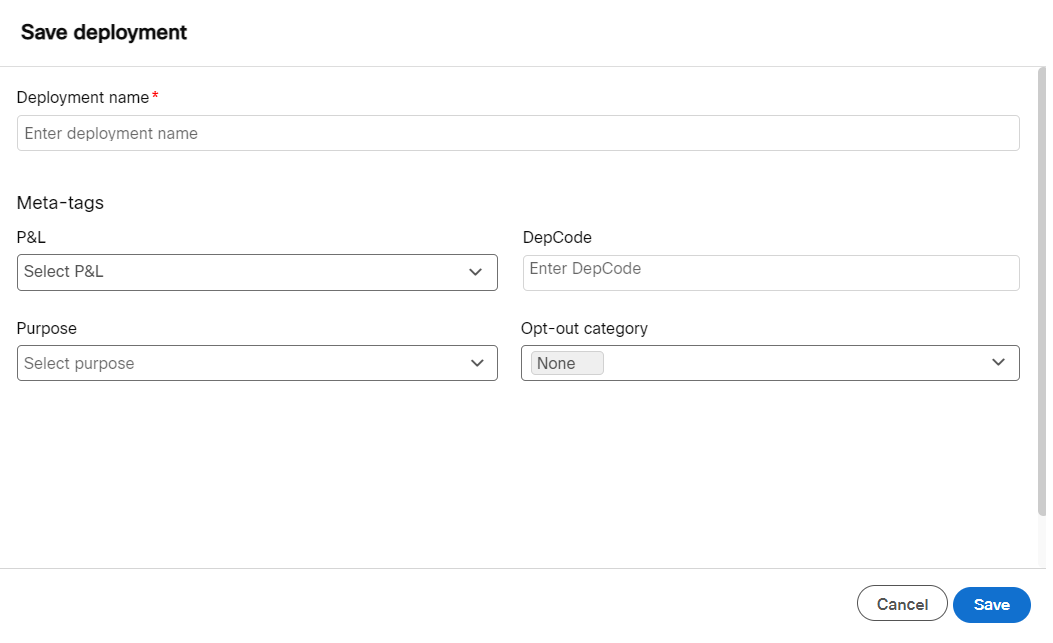
Now the deployment is ready for activation.
Step 7: Activate the Deployment
On the Campaign list screen, click the ellipses icon of the deployment and click Activate. You will receive notifications for various stages of the deployment.
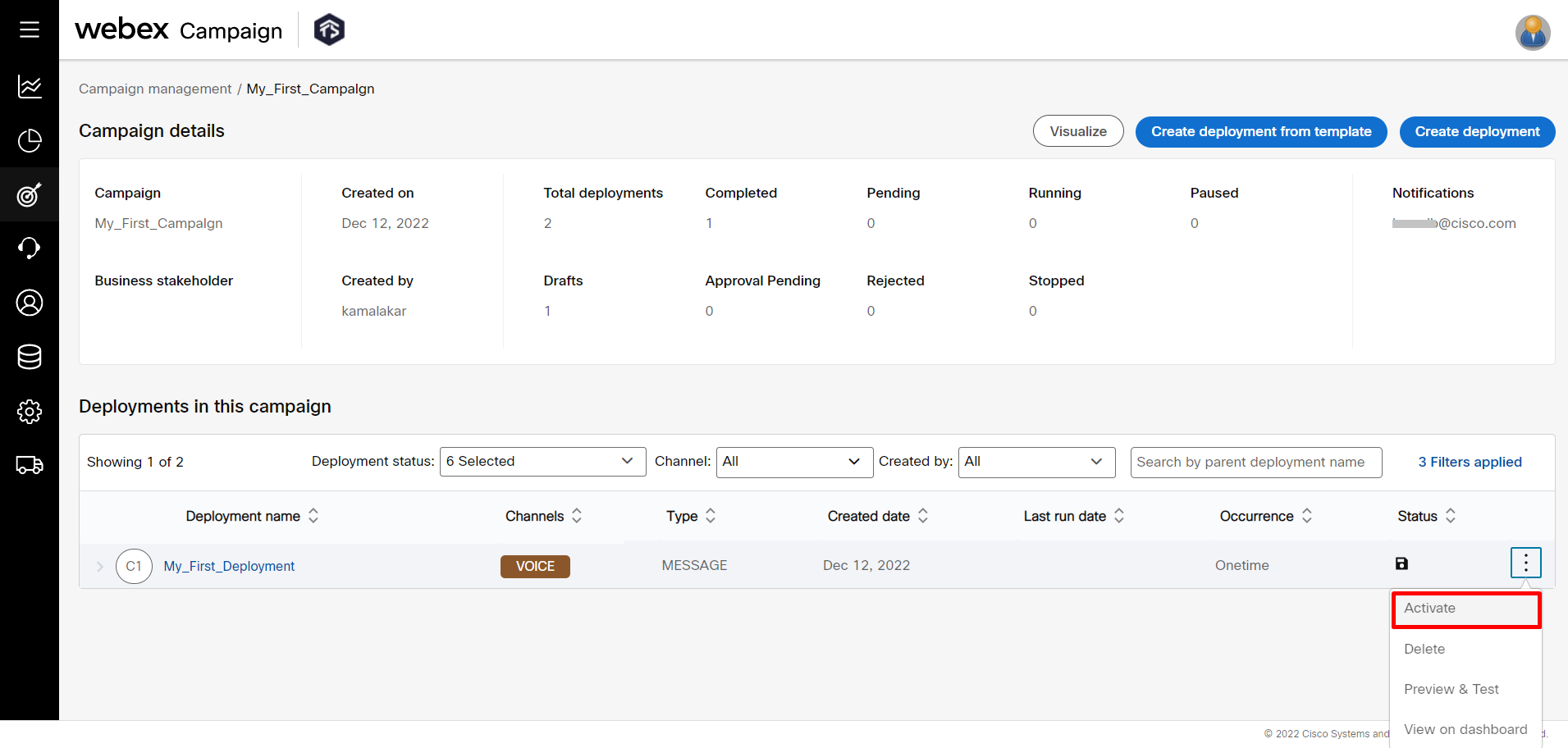
If the user does not have permission to approve their own created deployments, then instead of Activate button, you will notice Send for approval.
You can go to the Dashboard section to view the performance of your deployment.

Updated 11 months ago